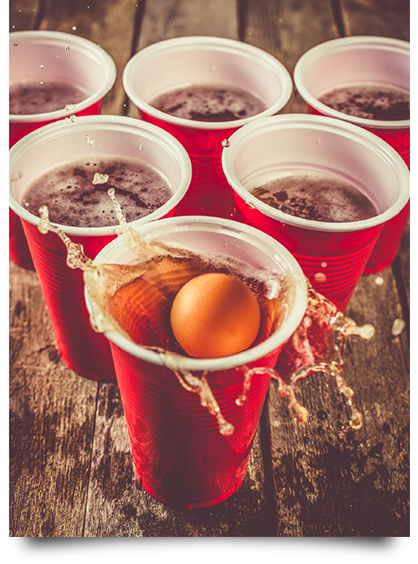Sports and Sexual Violence
Contextualizing Sexual Violence Among Student-Athletes
Student-athletes consistently reported that sexual violence mostly happened when there were asymmetrical power dynamics and/or alcohol and drugs being used.
ASYMMETICAL POWER DYNAMICS AND SEXUAL VIOLENCE
Some of the most influential relationships in the lives of intercollegiate athletes are those with their coaches, trainers and professors. All participants felt adults in these roles were ideally placed to positively influence the lives of student-athletes. At the same time, both students and administrators narrated how the power held by adults in these roles was sometimes used to manipulate athletes into sexually and/or emotionally abusive relationships and to impede them from reporting the incidents or seeking help.
“When you have individuals in power, like coaches, they can set the culture back and do a lot of damage to the way issues like sexual violence are approached and talked about.”
[Male Athlete]
ALCOHOL, OTHER DRUGS AND SEXUAL VIOLENCE
Some of the most influential relationships in the lives of intercollegiate athletes are those with their coaches, trainers and professors. All participants felt adults in these roles were ideally placed to positively influence the lives of student-athletes. At the same time, both students and administrators narrated how the power held by adults in these roles was sometimes used to manipulate athletes into sexually and/or emotionally abusive relationships and to impede them from reporting the incidents or seeking help.
Student-athletes believed peer-to-peer sexual violence (i.e., assault perpetrated by one student against another) mostly occurred when alcohol or other illicit drugs were used. Drinking alcohol was described as a ritual of college life and heavy episodic (or “binge”) drinking was felt to be normalized. In addition to drinking, students narrated how marijuana and prescription drug use (such as Adderall and Ritalin) were pervasive.
“These kids come to college and there’s alcohol everywhere, right? …We’ve noticed it’s becoming a bigger problem, you know – they are even using Oxycontin and mixing those kinds of drugs and alcohol and it can have a real negative effect.”
[Athletic Staff Member]
Student-athletes said that although their rigid academic/training schedules don’t allow time for engaging in mainstream college party culture, they do ‘party’ with one another. In fact, despite having less opportunity for frequent partying, studentathletes felt they were more likely to “binge drink” than non-athletes because their full schedules only leave short periods of time for socializing so they cram all their downtime activities and fun (including drinking) into limited windows of free time.


